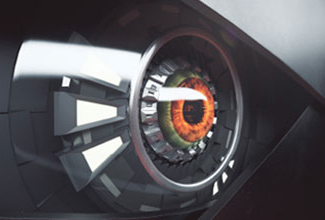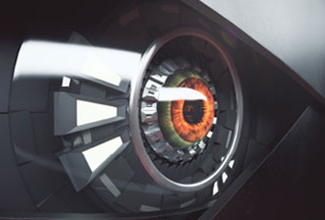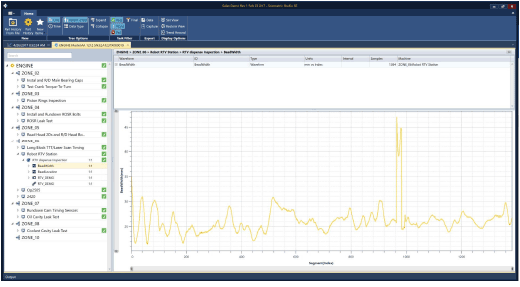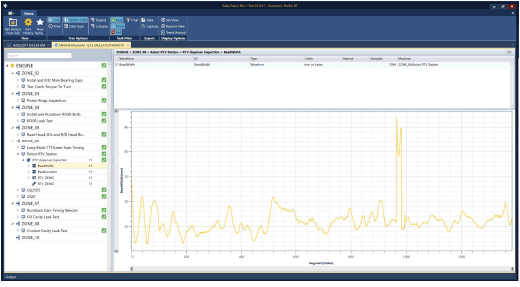- By Mathew Daniel
- Special Section
Summary
Fast Forward
- Data from sophisticated visions systems is often managed and used in simplistic ways.
- Data silos scattered throughout the plant that contain images and only the most basic of image data are of limited value.
- Using vision data holistically helps achieve highly intelligent, agile, information-driven factories that can respond rapidly to change.

Data management principles for machine vision

Machine vision is a multibillion-dollar market as manufacturers increasingly turn to this technology for automated quality inspection. And yet, the data from these sophisticated systems is often managed and used in simplistic ways. Even in case studies that examine the value and benefits of using a vision inspection system, data often earns only passing reference.
The result is data silos scattered throughout the plant that contain images and only the most basic of image data (such as pass/fail status). Although this approach makes access and retrieval difficult, there is at least basic traceability when needed.
But machine vision images and related data can do so much more. They can be collected and used to help drive quality, improve yield, and contribute to faster resolution of quarantines and recalls. In this article, I present how vision data can be used and the basics of how to architect the system required for its collection, storage, and analysis.
Driving Manufacturing 4.0
Using vision data with other datasets in a holistic fashion is fundamental to creating a modern factory capable of achieving the standards of not just Industry 4.0, but Manufacturing 4.0. Frost & Sullivan's Manufacturing Leadership Council defines Manufacturing 4.0 as characterized by highly intelligent, agile, information-driven factories that are able to respond rapidly to change, with connected sensor networks and advanced data analytics, and new, customized smart products and services.
It is surprising how many industry experts who evangelize the precepts of Manufacturing 4.0 neglect to include vision. Perhaps it is because vision systems on large original equipment manufacturer production lines generate so much data it is a nightmarish prospect to leverage it strategically. This is a misconception. It just takes the right tools and network architecture.
What you can do with machine vision data
Vision data can do much more than provide simple pass/fail determinations and basic traceability, if it is collected and stored in the right way. What is the right way? Collect the images and their related data into a central database, indexed by serial number. In this way, vision data can be consolidated with all the other data for a specific part or assembly. This results in a comprehensive birth history record that can be quickly searched and cross-referenced. What can you do with a birth history record that includes vision data?
- Greater insight into station performance: Quickly highlight stations that are falling behind in part count or in yield. This can be particularly useful for parallel station comparisons.
- Feature trend analysis: Set limits fast, and track time-of-day or product variances by model.
- Part failure process analysis: Review data from multiple processes to trace the root cause of a failed part. This is critical to quickly addressing and mitigating the issue. Take, for example, the failure of a seal in a joint. In a true Manufacturing 4.0 setting, you can take a comprehensive look at the joint's leak test results, fastening data, dispense data, real-time video image, and real-time video bead data to quickly identify and address the issue, as well as determine if any other parts are at risk of the same failure.
- Selective recall: This correlated data analysis then allows for a selective and targeted quarantine or recall. Why recall thousands of units and suffer the consequential impact to your bottom line and brand reputation if only a few are at risk?
- Proof of compliance: Image and image data that can be recalled by a part's serial number make it easy to provide evidence that the part was built to specification and that manufacturing and test processes were under control.
- Tracking limit changes and playing the numbers: Generate feature trend reports to analyze the effect of new limit settings. You can also use all your historic data to play "what if?" and run simulations to understand the effect of new limit settings.
How vision data must be managed to support these activities
Many plants are already using centralized data collection, management, and analysis tools for other datasets (e.g., digital process signatures, scalars) from processes and test stations on the line. Bringing machine vision images and data into this fold is the next logical step. For plants that are looking at a system for centralized data collection, management, and analysis for the first time, it only makes sense to get it right from the start and ensure machine vision is not a forgotten part of the equation. Either scenario requires an architecture for data transfer, be it a wireless network or a fixed Ethernet connection, and an archive.
It begins with a software gateway
Reliable, real-time image data transfer and accessibility requires a software gateway. This could be a software application running on a Windows-based system. It can be located on the plant floor on a PC or on an application server running multiple instances of the software in a virtual machine environment. The gateway should have the functionality to:
- Manage cameras and camera connections: Manage multiple cameras, save all camera software or "jobs" on the gateway station, show live camera status, and run calibration routines.
- Collect and transform images/data: This includes converting the supplied image format of the specific camera to the appropriate format for your database, merging images and overlays with the data format, and compressing images for more efficient storage.
- Manage those files: Manage image and image data file transfer (e.g., mapped folders, file transfer protocols, transmission control protocol listeners), temporarily or permanently store raw image files for later retrieval and analysis, and ensure data surety by caching data, because cameras and machine vision systems typically have limited or no local data storage.
- Make it all get along: This includes "handshaking" between programmable logic controllers, to ensure the 100 percent reliability of all data transfers, error handling, and system health, including retrying for missing data.
User-friendly archive
An archive is not a backup of your data. It is a means of keeping the production data repository at a consistent size with the flexibility to "slice" the data into meaningful buckets-such as blocks of one, two, or three months, to make it easy to rotate older data into longer term storage. This archive must be capable of storing terabytes of data in a way that supports easy and intuitive search and retrieval for rapid analysis.
The most effective way to accomplish this is for every image and its related data to be indexed by the serial number of the related part or assembly. As mentioned earlier, this makes it easy to correlate with all the other data relevant to that unit. We have worked in plants with DIY and vendor-specific databases that stored some data by date and time stamp in one silo and other data by serial number in a different silo. Any effort at data retrieval and correlation to troubleshoot a quality issue took days with custom query tools.
And let's not overlook a clear archival policy. This will govern the size and type of storage media you require. For example, you might set the following policies:
- Production data must be accessible for a maximum of 12 months
- Raw images should be kept for a period of six months
- Archival image data must be kept for a period of three years
For true manufacturing insight, you need vision
You cannot fix what you have not measured, and you cannot measure unless you collect, correlate, and analyze the right data. What is the right data? It should be clear by now that this is a trick question-all the data related to a part or assembly is the right data. Collecting it is seldom a problem. Discrete manufacturers have been collecting parts data in various ways from their production line processes and equipment for decades. But not all data is the same, nor is it useful in the same way.
Manufacturers today have at their disposal affordable tools that allow them to harness the true power of all their data, and that includes vision. Applying Manufacturing 4.0 principles to your machine vision data will give you even greater insight into production processes and tests, to achieve higher standards of quality and efficiency and troubleshoot problems faster when warranty claims come through the door.

Figure 1. Collect and organize all relevant image data. The surface of the part of the image data under visual inspection should be broken into regions, each with a corresponding feature node. This makes it possible to collect and index for easy analysis of different types of data from each region of the part, such as scalar values derived from the images and the digital process signatures. This data can then be used to create different reporting visuals, such as histograms of the machine vision-generated measurements for each part and time-based trends of when measurements were taken.

Figure 2. View statistical data on your image-derived scalar data. Analyze the imagebased profile (or waveform) data to chart trends and adjust processes, such as dispense systems or robotic stations. In this image, the consistency and accuracy of bead location and width during dispensing operations is being analyzed and trended.
Reader Feedback
We want to hear from you! Please send us your comments and questions about this topic to InTechmagazine@isa.org.


